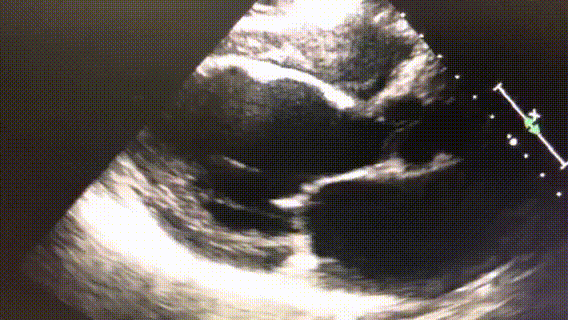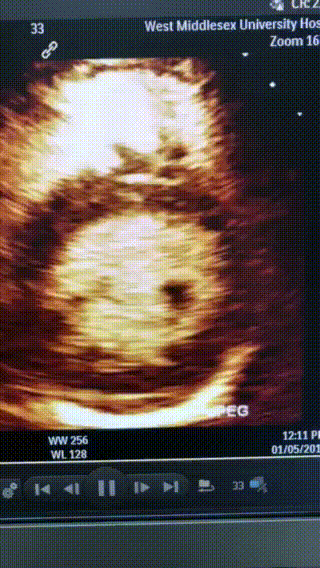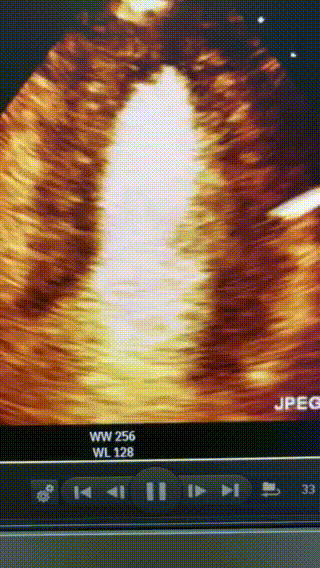The following segments can be seen in the 4 chamber view. True or false.
LVEDD = 40 mm, LVESD = 30 mm, Fractional Shortening = ?
LVOT diameter = 2.2 cm LVOT area = ?
The following features make 2D echo more accurate. True or false.
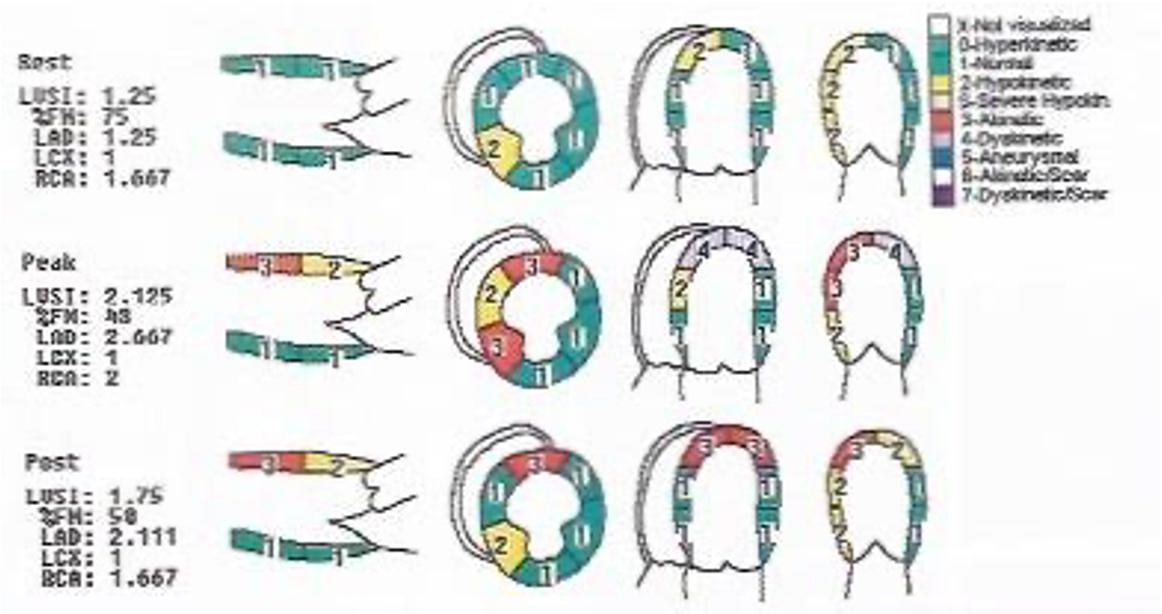
Assign a wall motion score to the mid anteroseptum at rest.
Assign a score to the apical anterior wall at peak stress.
Why is gas an excellent contrast agent? Pick the best answer.
How does contrast work?
Comment on RV systolic function. Pick the best answer.
![]()
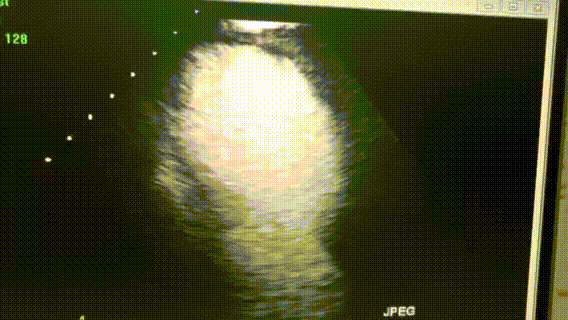
Name the view.
The basal anterior wall is? Pick the best answer.
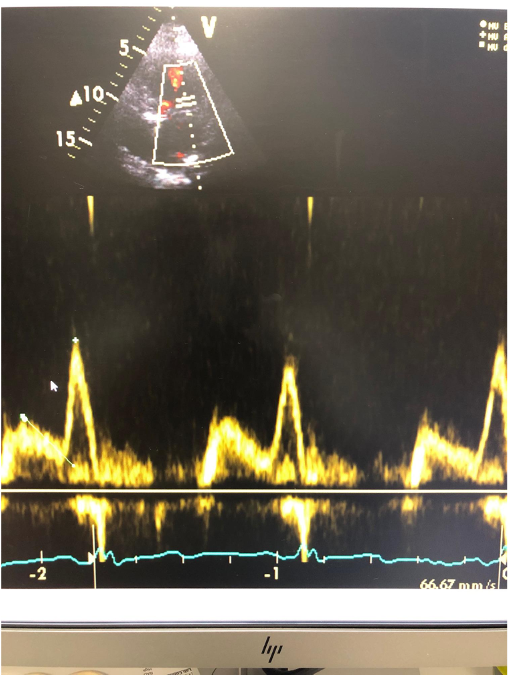
Which modality through which valve?
What does the above image tell us about LV functions?
Are there motion abnormalities? Pick the best answer.
![]()
Are there wall motion abnormalities? Pick the best answer.
![]()
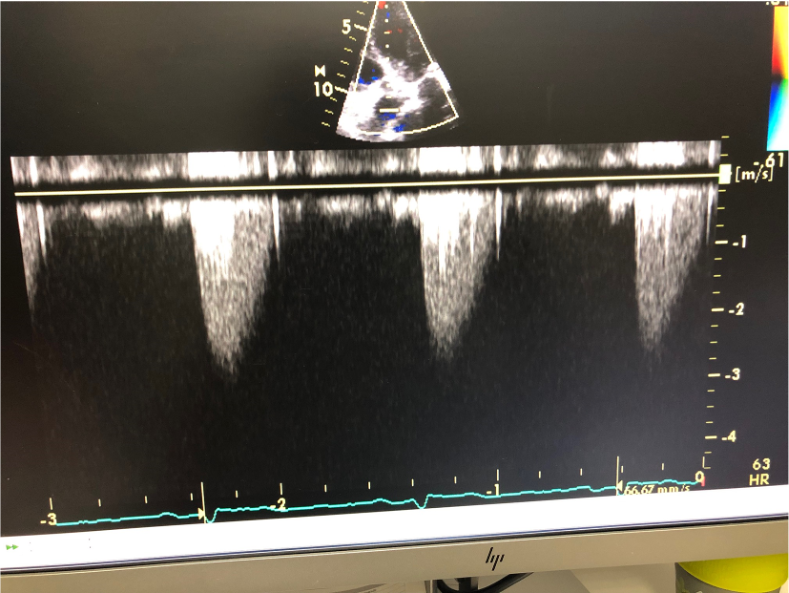
What is the modality and the valve? Pick the best answer.
Calculate the approximate peak gradient.
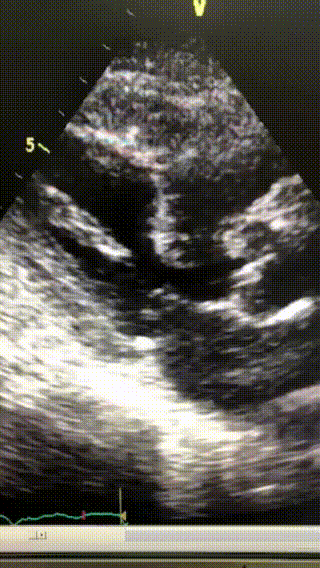
What is the main valve pathology? Pick the best answer.
Can you see another valve abnormality?
There is Mitral annual calcification
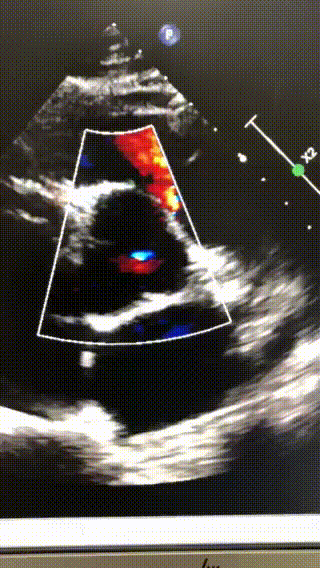
Name the valves you can see. Pick the best answer.
- Tricuspid, pulmonary, mitral
- Tricuspid, aortic, mitral
- Aortic, mitral, pulmonary
- Aortic, tricuspid, pulmonary
Is there a pathology? Pick the best answer.
- Bicuspid aortic valve, aortic stenosis
- Tricuspid aortic valve, aortic stenosis
- No pathology
- Bicuspid aortic valve, aortic regurgitation
- Tricuspid aortic valve, aortic regurgitation
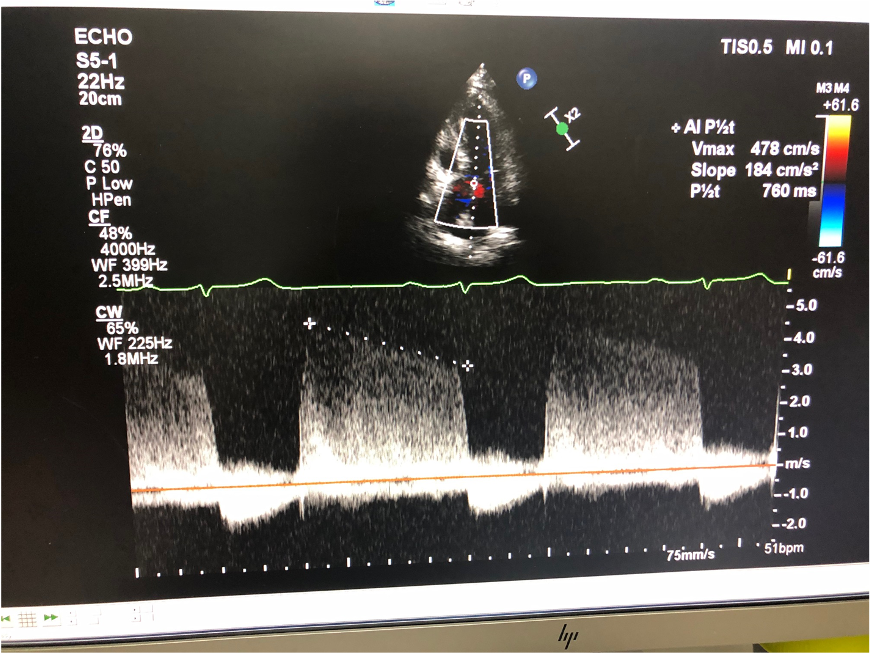
What is the pathology? Pick the best answer.
- Aortic stenosis
- Aortic regurgitation
- Pulmonary stenosis
- Pulmonary regurgitation
- Tricuspid stenosis
What is the degree of the abnormality in the above picture? Pick the best answer.
- Mild
- Moderate
- Severe
- Impossible to assess
TAVI: True or false
- Should be considered in moderate risk patients
- Has a higher rate of pacemaker insertion than surgery
- TAVI complications include paraprosthetic leak
- TAVI always needs general anaesthesia
- TAVI always needs a transapical approach
Mitraclip. True or false
- Always has better results than mitral valve repair
- Is ideal for patients with endocarditis
- Is ideal for patients with rheumatic heart disease
- Is best suited to patients with functional mitral regurgitation
- You can only place one clip per valve
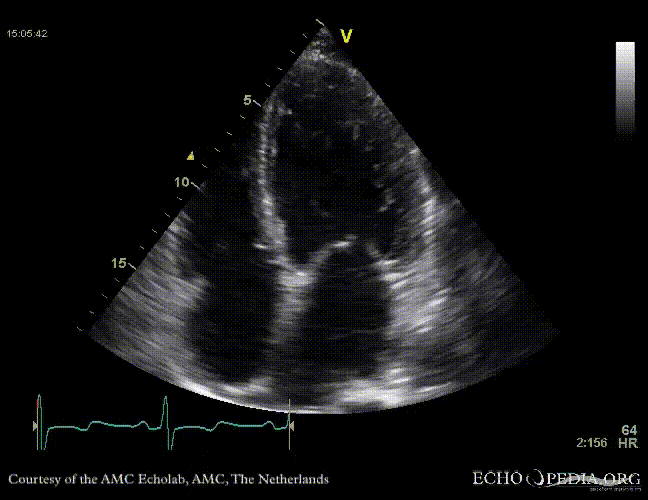
Comment on LV systolic function. Pick the best answer.
- Normal
- Mildly impaired
- Moderately impaired
- Severely impaired
Comment on RV systolic function. Pick the best answer.
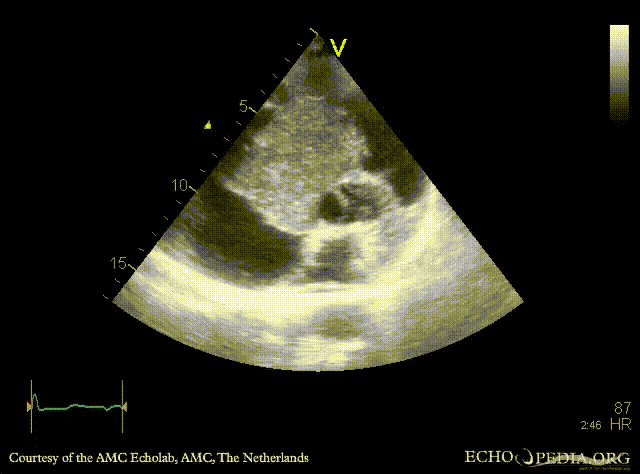
In which chamber is the abnormality?
What is the abnormality? Pick the best answer.
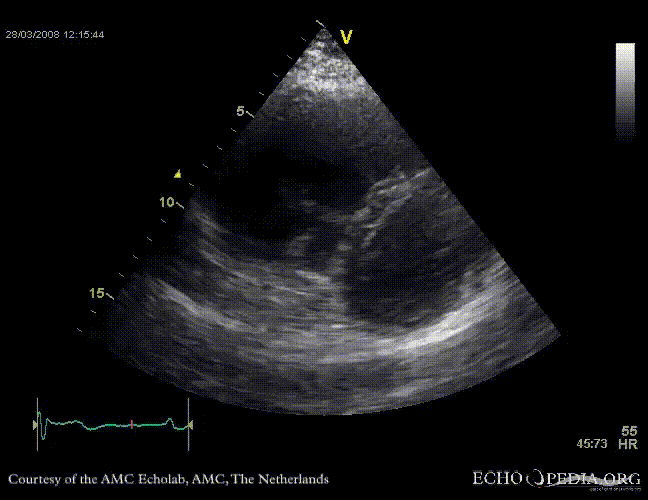
Is the right ventricle… Pick the best answer.
Likely pathology. Pick the best answer.
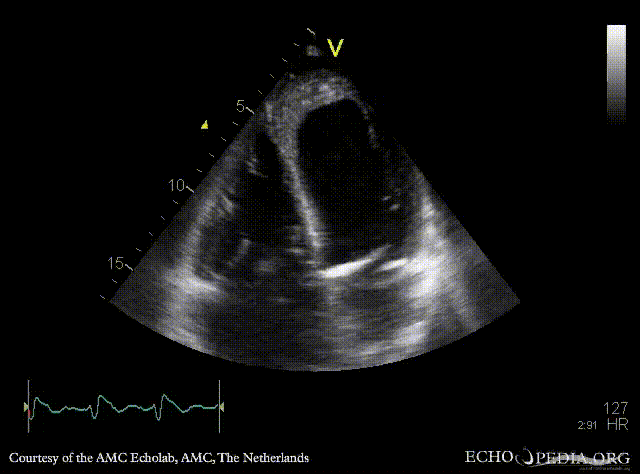
Systolic function is… Pick the best answer.
Any other abnormality? True or false.
